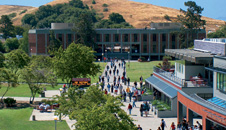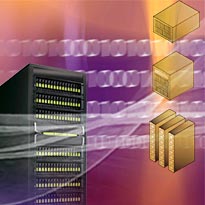Portal:Storage
From Wikibon
The Wikibon Data Storage Portal contains data storage industry research, articles, expert opinion, and data storage company profiles.
WikitipTime to get serious about flash-based storageEMC’s direct DMX competitors should demonstrate they have an understanding of flash-based storage and are working on a similar capability. They should educate customers on the challenges of durability of these devices and provide credible evidence that they have an approach to address the problem and integrate similar products into their existing lines, all the while stressing that companies like STEC are OEM suppliers who typically don’t sign exclusive deals with a single customer. All suppliers should articulate their flash-based strategies to customers by 2008 to allow for adequate planning of this re-emerging technology. |
Featured Case StudyVirtualization Energizes Cal State UniversityJohn Charles is the CIO of California State University, East Bay (CSUEB) and Rich Avila is Director, Server & Network Operations. In late 2007 they were both looking down the barrel of a gun. The total amount of power being used in the data center was 67KVA. The maximum power from the current plant was 75kVA. PG&E had informed them that no more power could be delivered. They would be out of power in less than six months. A new data center was planned, but would not be available for two years. |
|
Featured How-To Note |
Storage Virtualization Design and DeploymentA main impediment to storage virtualization is the lack of multiple storage vendor (heterogeneous) support within available virtualization technologies. This inhibits deployment across a data center. The only practical approach is either to implement a single vendor solution across the whole of the data center (practical only for small and some medium size data centers) or to implement virtualization in one or more of the largest storage pools within a data center. | |||



